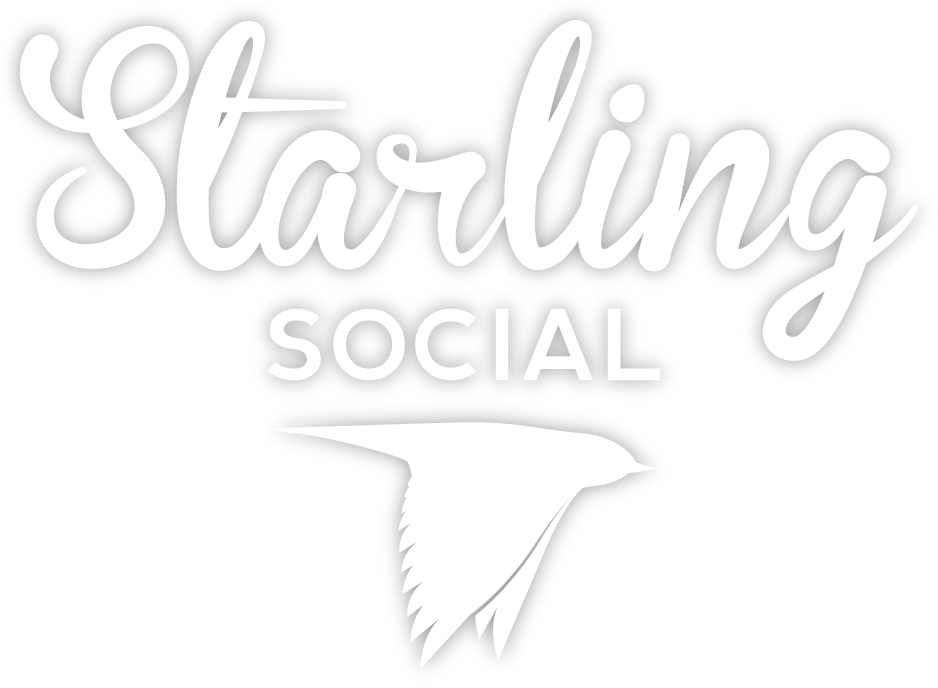How to Do Content Marketing Beyond Blogging: Podcasts, Webinars, and More
Written by Starling Social President, Alyson Shane
I’ve been publishing content online since 2002 and have watched firsthand as the world of content marketing has changed dramatically in that time.
Once upon a time we were all just a bunch of bloggers in the “blogosphere” listing our favourite sites on our blogrolls, but over the past decade-and-change the way and place we publish and share our content with our audiences has become almost unrecognizable from where I first started out.
So today I want to dig into the evolving landscape of content marketing: where it’s been, where it is, and where it’s going — all do you can develop a strategy that connects you with more of your target audience than ever before.
Let’s get into it:
Why Does Content Marketing Matter?
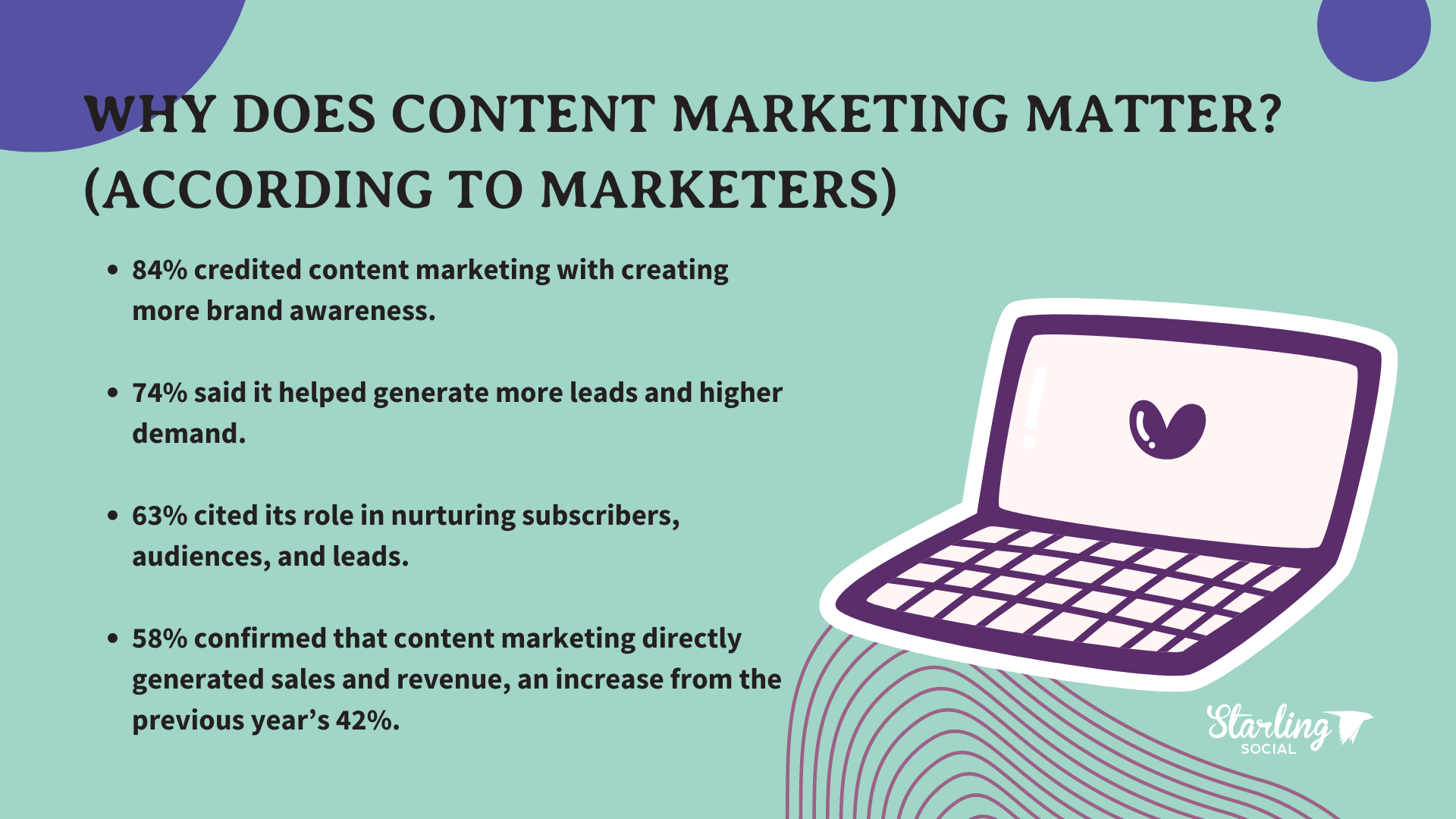
Content marketing describes a type of marketing that “involves the creation and sharing of online material (such as videos, blogs, and social media posts) that does not explicitly promote a brand but is intended to stimulate interest in its products or services” (thank you, Oxford Dictionary).
It’s also the most powerful way to continually reinforce your brand’s message, values, and convey the ways your products and services make your customer’s lives better.
But don’t just take my word for it, according to the Content Marketing Institute (CMI), marketers have been seeing success with content marketing across the board.
Here are a few stats to back that up:
- 84% credited content marketing with creating more brand awareness.
- 74% said it helped generate more leads and higher demand.
- 63% cited its role in nurturing subscribers, audiences, and leads.
- 58% confirmed that content marketing directly generated sales and revenue, an increase from the previous year’s 42%.
It’s clear that finding more ways to share your content with your audience has a net positive effect on your business, but before we dive into all the avenues available to you, let’s quickly review how we got to where we are:
The Evolution of Content Marketing
1994: The First Banner Ad
All the way back in 1994, AT&T ran a banner ad on HotWired.com and earned a click-through rate (CTR) of 44%. These results have the industry completely shooketh, and established a precedent for how companies would start turning to the internet to connect with their customers.
1995: Amazon Introduces Customer Reviews
Weird to think that Amazon has been around this long, but it’s true!
Allowing customers to say whatever they wanted about the products they were buying through the site created avenues for two-way conversations with brands that didn’t exist before.
It also opened up the floodgates for new opportunities for companies to gather real-time feedback from customers before social media exploded onto the scene.
1996: Microsoft Launches “NetMeetings” and Webinars
Although the term “webinar” wouldn’t be popularized until 1998, the first public “web conferences” were already gaining popularity.
Since then we’ve seen the introduction of more sophisticated tools like Google Meet, Zoom, GoToWebinar, ClickMeeting, and more.
1998: Google Changes Everything
Google and its PageRank algorithm is arguably one of the most important developments to ever happen to the internet.
By prioritizing a website’s “relevance” it changed websites from static spots online, to places where businesses regularly began to develop and publish content to improve their digital exposure, setting the groundwork for the SEO sector and brand visibility online.
1999: RSS Feeds
RSS feeds scrape content from sites you connect it to, allowing you to access information in one handy dashboard as soon as it’s published.
These tools didn’t become popular until the early 2000’s, but stayed the dominant way people accessed content until social media essentially ate its lunch.
2000: Google Launches AdWords
Google AdWords (now Google Ads) launched in 2000 and allowed advertisers to pay to show their ads at the top of search engine results pages (SERPS).
By 2002, they were paying by click, which is where the expression pay-per-click (PPC) originates from. This technology allowed marketers to display relevant ads only to people who were searching for exactly what they were selling, making this one of the most powerful forms of online advertising.
2003: WordPress Launches
Internet veterans like me will remember sites like Geocities, LiveJournal, and Blogger.com that came before WordPress, but this tool and its WYSIWYG (What You See Is What You Get) interface democratized the ability for anyone, anywhere, to make a website.
2004: Podcasts Enter the Scene
In his 2004 piece for The Guardian, Ben Hammersley described this new audio format as “downloadable as you wish” with Apple launching iTunes 4.9, which had podcast support, the following year.
(Fun fact: 2005 was when I started listening to podcasts!)
2005: YouTube Launches + “Inbound Marketing” Becomes a Thing
The first YouTube video was posted by one of the platform’s founders. Called “Meet Me at The Zoo” it was a potato quality, 19-second video that would go on to revolutionize how marketers and content creators alike published and shared content.
That same year HubSpot coined the term “inbound marketing” in an effort to show that producing relevant, and helpful material was the best way to build relationships with customers.
2007: The iPhone Launches
This is arguably one of the most important developments of the internet age.
The iPhone and its groundbreaking interface allowed marketers to develop content specifically for mobile devices and paved the way for the app ecosystem we have today.
2007: Facebook Launches Business Pages
The introduction of Facebook Business Pages allowed companies to publish content on the platform that would show up in users’ feeds, giving them a whole new way to connect with their audiences on social media.
2011: BuzzFeed Explodes
BuzzFeed was ranked the 13th most popular blog in the world in 2011 and made engagement tactics like quizzes, calculators, and YouTube videos cross-posted to the site incredibly popular.
2012: Facebook Buys Instagram
Facebook paid around $1 billion for Instagram that year and changed the way social networks relied on paid advertising and influencer marketing, with Sponsored Posts being introduced in 2013 and putting a focus on collaborative content with users on the platform.
2013: Google Hangouts On Air Make Webinars More Mainstream
The introduction of this service allowed users to broadcast seminars, live sessions, and conferences to massive audiences for free, allowing the webinar industry to reach a global audience.
2013: Snapchat Introduces SnapChat Stories and Vine Launches
Snapchat’s Stories needed to be timely, relevant, and in some cases participatory because they would disappear after 24 hours, and laid the groundwork for a trend in content marketing that would eventually be copied by every single other social media platform.
That same year Vine popularized the publication of short-form content, eventually inspiring TikTok and Instagram Reels.
2016: Google Introduces Mobile-First Indexing
In response to the quickly-growing number of people using mobile devices, Google announced that it was shifting to “mobile-first” indexing, forcing marketers to focus on content that was optimized for smaller screens and adapting their SEO strategies accordingly.
2018: TikTok Launches
TikTok exploded onto the scene in 2018, paving the way for marketers to reach a global audience of yonder people and catapulting short-form video into the mainstream to be copied like platforms like Instagram (2020), YouTube (2021), and Facebook (2022).
2020: The Rise of Zoom
I’d be remiss if I didn’t include the rise of Zoom as the go-to platform for businesses, schools, and regular people during the pandemic.
Webinars had been around in the pre-pandemic years, of course, but being forced to pivot to online-only events helped solidify this type of content into the mainstream.
2022/2023: AI On The Rise
AI started to become mainstream with the launch of ChatGPT 2022, but it wasn’t until 2023 when OpenAI released GPT-4 in 2023 that it really became a mainstream tool.
Now, AI tools like ChatGPT and others (we list some here) are changing the way content is created more quickly than ever before.
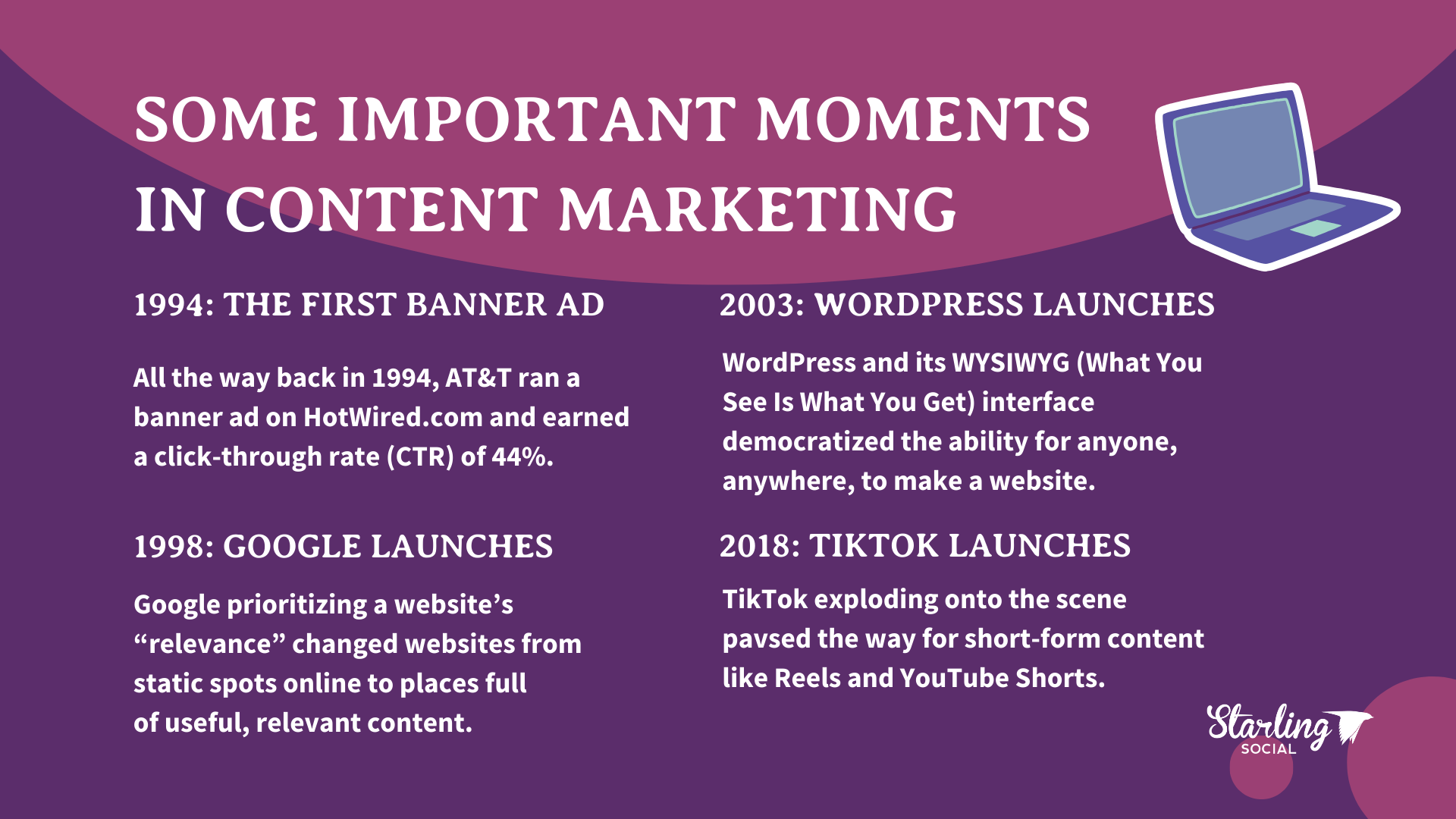
Types of Content Marketing
Blogging
Of course I had to start here, with the “OG” type of content marketing.
Blogs (like this one) are still among the most important types of content marketing for several reasons, including:
- Building trust in your brand. Being able to articulate what you know about your industry and educate people about it shows that you know what you’re an expert in your field.
- Increasing website traffic. Blogs are still an important part of your search engine optimization (SEO) strategy. Not just because you can include important keywords in your content, but also because blogs engage readers for longer periods of time than landing pages, which increases SEO value.
- Driving conversions and sales. When someone lands on your website and reads your blog, it helps them learn more about you and what you offer, which increases the likelihood that they’ll reach out.
- Increasing link-building efforts. Linking to authoritative sources in your blog content, like a product manufacturer, page that has data to back up your writing, or other “reputable” website helps improve your search engine ranking.
- Repurposing blogs for social media. You’ve probably noticed that we share 2-3 posts on average per blog post to our social feeds, not to mention when I promote them on my personal LinkedIn. This is a “bricks and feathers” approach to content marketing that works really well, and reduces the burden on you to constantly come up with unique content for every social media post.
But enough about blogs. Let’s explore some of the other types of content marketing you should be leaning into:
Video Content
Vidyard found that the average video retention rate for videos across the board is 54%, making this type of content one of the most impactful kinds you can create.
Video marketing is continuing to evolve, but some of the most popular types of videos you can create are:
- Instagram Reels
- Facebook Reels
- TikTok videos
- YouTube Shorts
- Livestreams
The possibilities here are really endless. You can create tutorials on YouTube; short, snappy TikToks and Reels with trending audio and sounds; and everything in-between.
One example I really like is Old Spice’s “The Man Your Man Could Smell Like” campaign that launched back in 2010. The videos featured actor Isaiah Mustafa (aka the "Old Spice Guy") in a variety of weird and silly situations speaking directly into the camera in an exaggerated way.
This campaign re-positioned Old Spice as a brand that didn’t just cater to older men, but was attractive to trendy, young people, too. The campaign was so successful that Old Spice’s sales skyrocketed by 107%.
Infographics
Humans have been creating infographics since the pre-internet period, but this type of content is especially useful at conveying information online since users’ attention spans sit at around 8.5 seconds.
While infographics can be effective, there are a few ground rules to keep in mind:
- Plan your infographic and use it to build on the narratives you’re already telling with your other content.
- Use headings and subheadings to increase “readability” and keep users engaged.
- Lean on tools like Canva, Piktochart, and others to easily create scroll-stopping graphics.
- Consider making infographic templates for yourself to make creating new ones fast and easy.
Podcasts
Like I said above, podcasts have been around for ages, but only recently have become one of the more popular ways for brands and marketers to get their message out there.
Podcasts can help you reach a wider engaged audience who are interested in your industry and expertise. Some of the ways you can use podcasts are:
- Interviewing guests, experts, and influencers.
- Sharing insights on trends, news, and spicy topics.
- Increasing your visibility through platforms like Apotify, Apple Podcasts, and Google Podcasts.
- Build a loyal and active community around your brand.
Protip: If you don’t have time to host your own podcast, look for podcasts in your niche and pitch them on being a guest on the show. I do this all the time and get a lot of traction and awareness about Starling Social from my interviews!
Memes
If you follow us on social media, you know we love a good meme.
Memes are a form of cultural expression that spread through variation and imitation, and can be images, videos, text, music… you name it, these days it’s probably meme-able.
Memes are effective forms of content marketing for the following reasons:
- They showcase your brand personality, voice, and sense of humour.
- They relate to your audience and their challenges and pain points.
- They engage with your audience and encourage them to like, comment, and share your posts.
- They show you’re “tapped in” to current cultural trends and have your finger on the pulse enough to create entertaining, relevant, and engaging content.
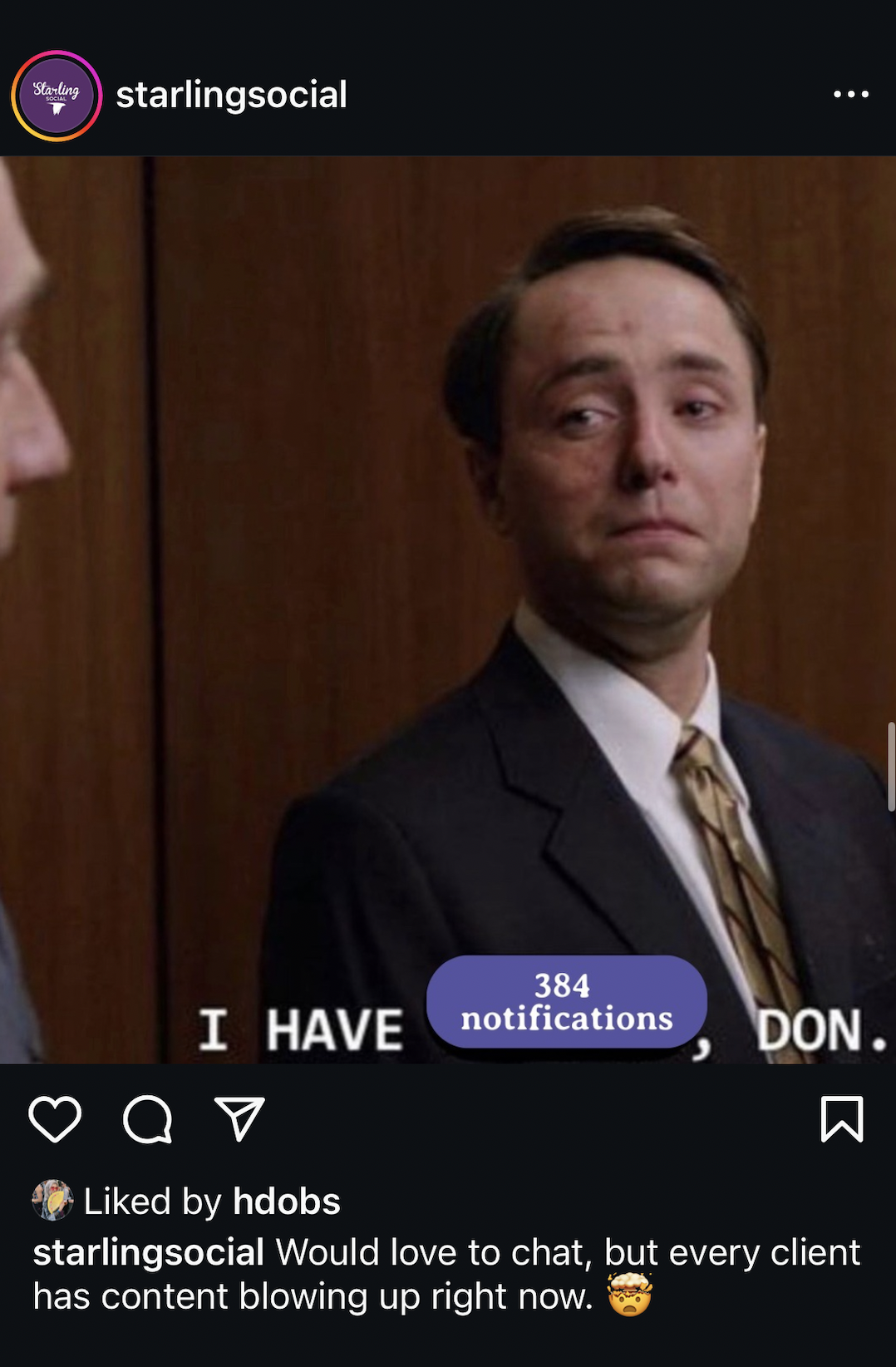 | 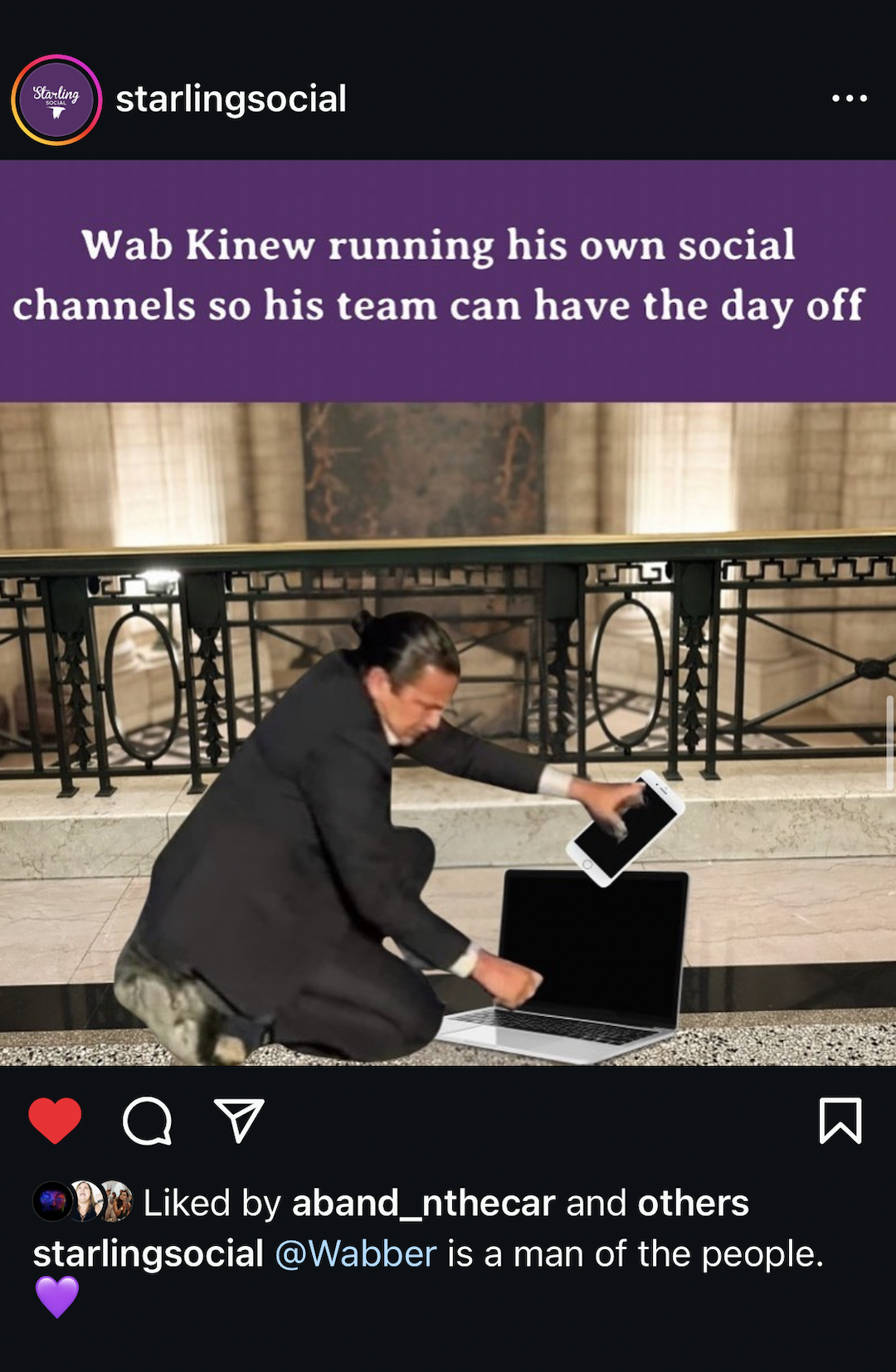 | 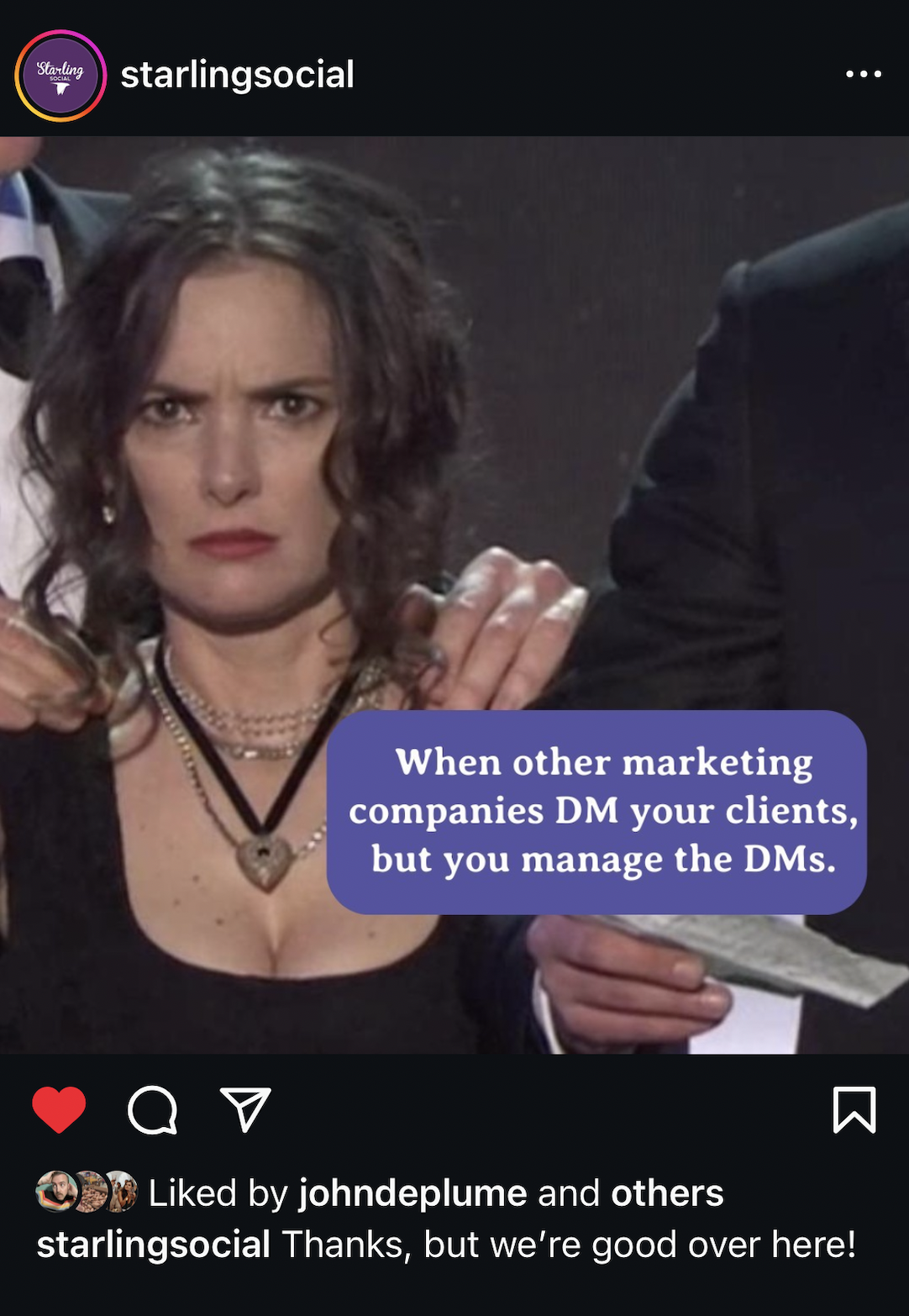 |
Webinars
Webinars are a great way to generate brand awareness because they position you as a subject matter expert and give you a platform to educate and empower your audience.
They also reinforce you as a subject matter expert who can easily talk about specific topics, ideas, or strategies related to your industry.
Because webinars are delivered digitally, they also allow you to reach a broader online audience of people who might not have heard about you otherwise.
You can host your own, or partner with other brands and organizations to develop and deliver your webinars to a specific audience. For example, I’ve delivered dozens of webinars as a facilitator with Volunteer Manitoba since 2017, which has allowed me to connect with nonprofit organizations in my community who I might not have been able to reach otherwise.
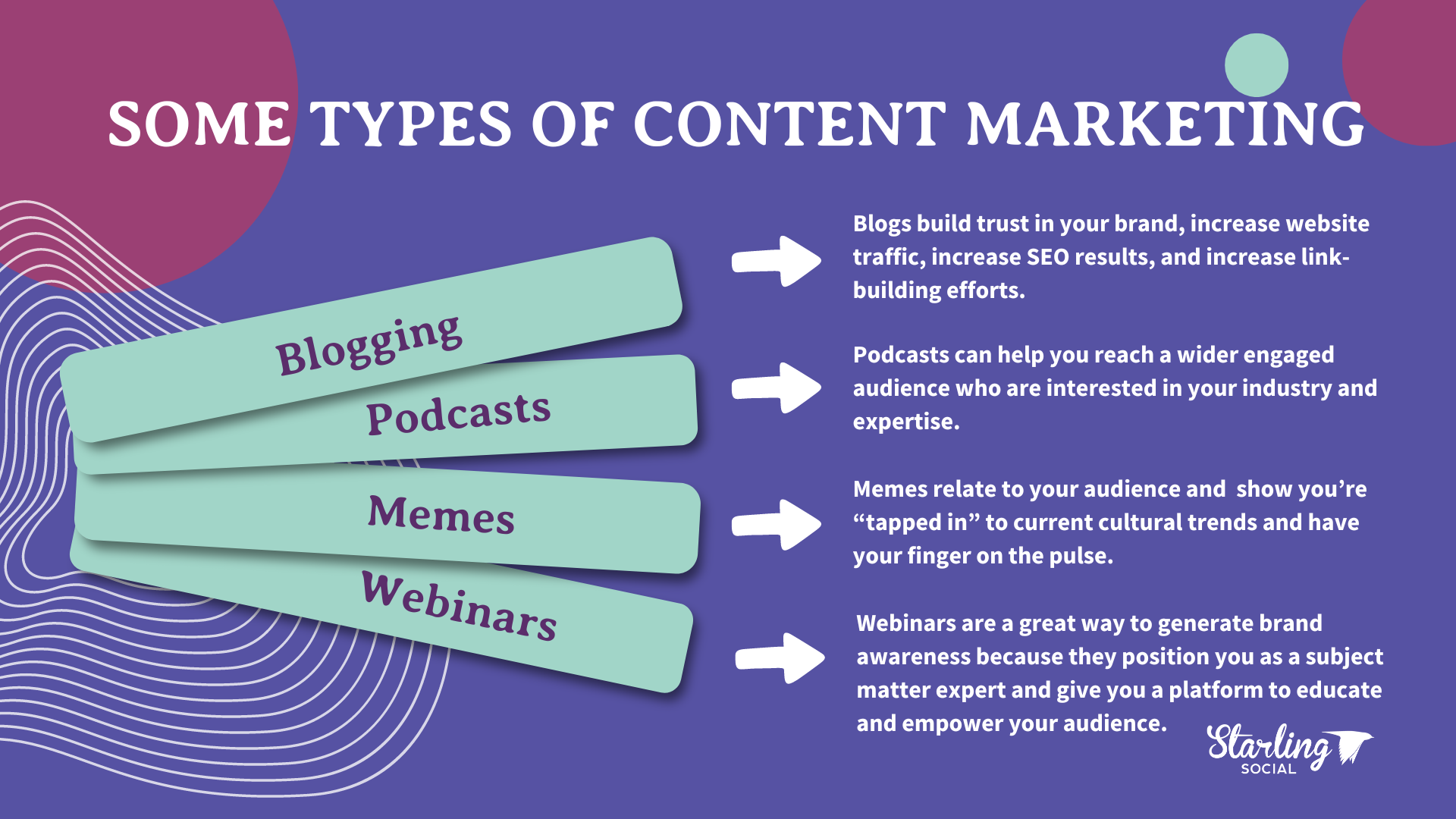
eBooks
Before you clutch your pearls at the thought of writing a whole book, think of it as long-form blog content instead.
eBooks aren’t novels; they’re multi-page ads for your business that reinforce you as a subject matter expert and empower potential clients and customers with information that builds trust.
One great example is The Experience Optimization Playbook by Optimizely, which explores optimization strategies from Fortune 500 companies.
Case Studies and Whitepapers
Case studies can be time-consuming to create, but are a great way to tell a story about how your product or service helped your customers achieve a specific outcome or goal.
With this type of content, your audience can see a customer’s journey from start to finish and see similar use cases in real life.
A great example from LinkedIn shows how HSBC used LinkedIn’s marketing tools helped them diverse the way their marketing content is presented:
While whitepapers and eBooks are both examples of long-form content, they’re not the same thing.
Whitepapers are more densely-packed with information and data than most eBooks, and are detail-oriented where eBooks are more high-level.
User-Generated Content (UGC)
UGC is one of the easiest ways to gather content that tells a positive story about your brand, your products and services, and how they help real-life people.
People respond more positively when they hear stories told from people like them and can turn viewers into customers much more quickly than a lot of other content types out there.
One example of UGC I really like is from Doritos. They launched a site called Doritos Legion of Creators where users can create branded images and videos that Doritos shares on their social media accounts.
Users have come up with all sorts of content, from snack-centric weather forecasts, to pictures of themselves laying back in piles of nachos, and more. The company keeps creators engaged by creating challenges like the “oddly satisfying challenge” which invites creators to create oddly satisfying videos for the chance to be featured on their Instagram Stories.
Testimonials + Reviews
Like UGC, testimonials and review-based content are generated straight from your audience and their experiences with your products and services.
This type of content is especially impactful if your business is operating in a niche market, because testimonials can act as overviews of what sets you apart from the competition.
You can see examples of how bigger companies like Nike use them, too; their Instagram feed is pretty much all celebrity endorsements and reviews.
Grow Your Business with Content Marketing
Content marketing doesn’t just drive immediate results; it’s a long-term investment in your company’s future and brand awareness goals.
By creating relevant, valuable, and high-quality content, you can attract new customers to your business and keep them coming back for years to come - and the best part is that you don’t need a huge marketing budget or team to do it!
